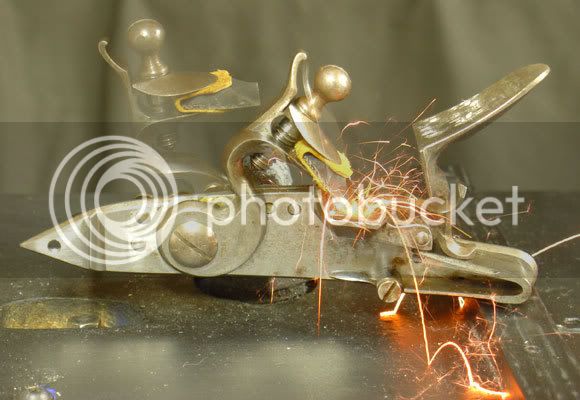Black Jaque Janaviac
40 Cal.
- Joined
- Sep 2, 2009
- Messages
- 535
- Reaction score
- 73
I have a TVM Early Virginia with a 1 1/8-inch breech width, 5/16-inch White Lightning liner, and a Chambers Colonial Fowler lock.
When this was new, I would get the occasional flash in the pan. So I drilled the touch hole out to 1/16-inch. That fixed the failure to fire problems.
But I've been plagued with slow ignition. I've been practicing with just an empty barrel and focusing on following through by just priming the pan and "dry-firing". It seems like the pan flashes pretty much instantaneously. So I'm beginning to think the problem is with the touch-hole.
I went with the White Lightning because it was reputed to be the best. What gives?
When this was new, I would get the occasional flash in the pan. So I drilled the touch hole out to 1/16-inch. That fixed the failure to fire problems.
But I've been plagued with slow ignition. I've been practicing with just an empty barrel and focusing on following through by just priming the pan and "dry-firing". It seems like the pan flashes pretty much instantaneously. So I'm beginning to think the problem is with the touch-hole.
I went with the White Lightning because it was reputed to be the best. What gives?





